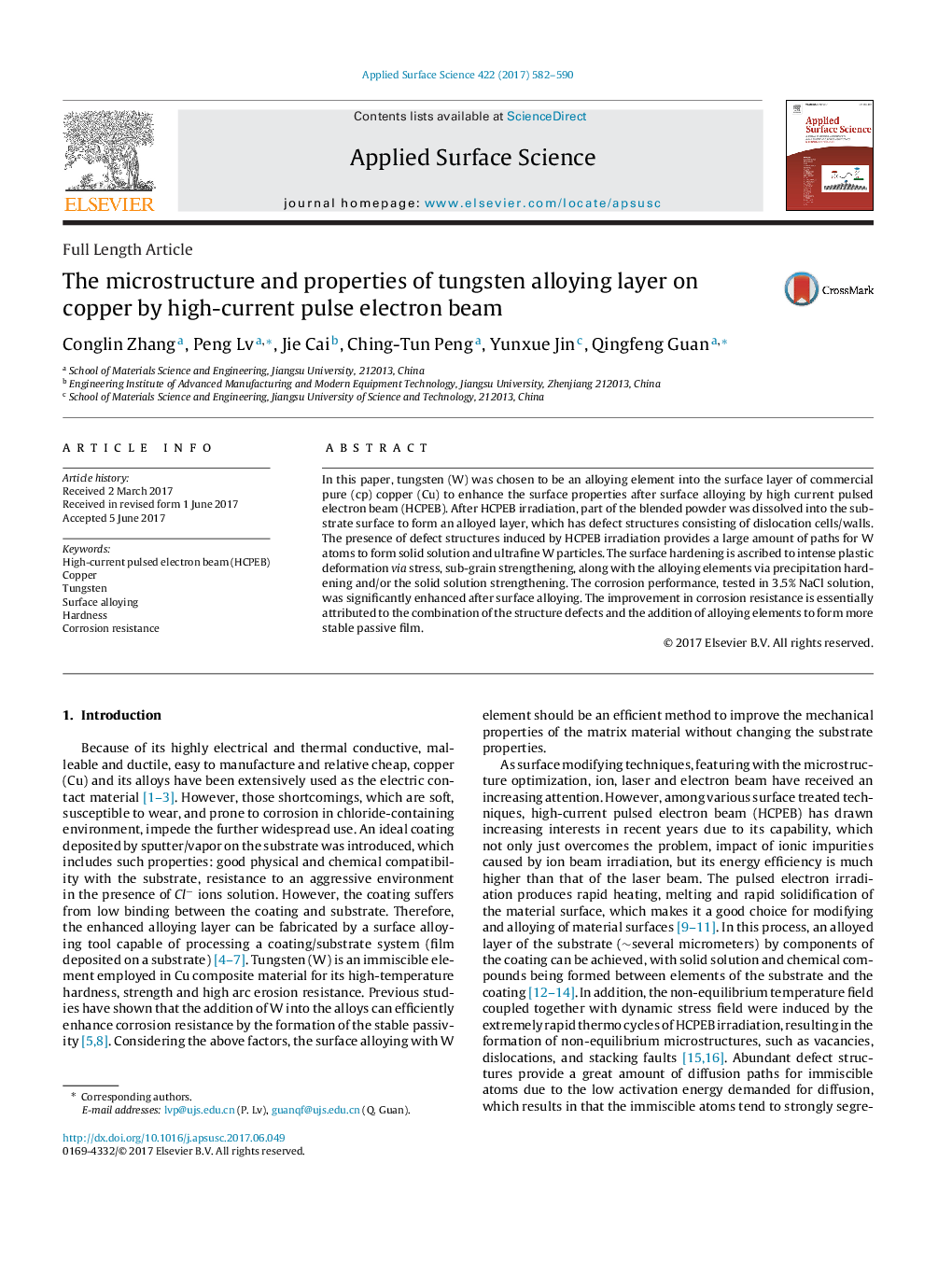| Article ID | Journal | Published Year | Pages | File Type |
|---|---|---|---|---|
| 5347576 | Applied Surface Science | 2017 | 9 Pages |
Abstract
In this paper, tungsten (W) was chosen to be an alloying element into the surface layer of commercial pure (cp) copper (Cu) to enhance the surface properties after surface alloying by high current pulsed electron beam (HCPEB). After HCPEB irradiation, part of the blended powder was dissolved into the substrate surface to form an alloyed layer, which has defect structures consisting of dislocation cells/walls. The presence of defect structures induced by HCPEB irradiation provides a large amount of paths for W atoms to form solid solution and ultrafine W particles. The surface hardening is ascribed to intense plastic deformation via stress, sub-grain strengthening, along with the alloying elements via precipitation hardening and/or the solid solution strengthening. The corrosion performance, tested in 3.5% NaCl solution, was significantly enhanced after surface alloying. The improvement in corrosion resistance is essentially attributed to the combination of the structure defects and the addition of alloying elements to form more stable passive film.
Keywords
Related Topics
Physical Sciences and Engineering
Chemistry
Physical and Theoretical Chemistry
Authors
Conglin Zhang, Peng Lv, Jie Cai, Ching-Tun Peng, Yunxue Jin, Qingfeng Guan,
